
Note 1122
to Harvey, with care
This is a structured improvisation, embodied insights, and researched experimentation in a constant flux of development — the trial of doing. As the facilitator, I noticed the amusement of participants engaging with tactile materials and recycled packaging ruptured under pressure. Reviewing the camera roll from the display screen, I sit with the juxtaposition between what is recorded and the imagined intention. My radical feminist agenda intermingles with interviews amongst commuters who announce their participation as sympathetic support. I laugh that even when the forgotten intersections of black feminism are collapsed onto my camera roll, its gaze is still its brother’s keeper. Black women appear eclipsed, focused hands without faces, reluctant to be recorded in a score unrealized. Yet, their diminutive income and third shifts raise the poorest of households in the country even when their psyche and body have been abused. I scold myself for the error of two unrecorded interviews, one transcribed in a note. Camera shy, playing both reader and speaker, an interviewee reminds me of a familiar didactic parable: it is better to drink your anger than to spill it onto another. Standing before me as a stranger, the speaker tells me the verse is from the Quran. She tells me that she takes her anger to a mat and holds it in herself as an act of prayer — by her admission, there is an omission. She continues with a statement that hits like a disclaimer — with a questioning yet even cadence, she states, “well, others should express themselves” — their anger — but for her — herself — she continues to contemplate, instead noting her observance of authority before referring to herself as a burden in her parent’s home. Anger is a sentiment unworthy of expression, an emotion to be held quietly and swallowed into the gut. I listen, trying to detach myself from a Western analysis of suppressive force – but before I recognize the question, the train pulls into the platform taking her Northbound into the city.
Left stationary on the platform, I consider where the emotion goes — whether neutralized or diluted, does it remain in its mass, masked or dissolved, ingested into the body?



Kineses & Mirror
Note 1122 to Harvey, with care, reassembles ethno-documentation from the activation as a video installation to move between the kinetic poles of libidinal motif and projective gaze, rotating between sublimation and the stagnation of pathological space.
Both video installations, Kinesis & Mirror and Call & Response, extend an invitation into a co-performative space of affective release to understand the psychic demand of suppression and affective containment. I attempt to create a relational engagement from the politics of reception to reexamine constricted affect and the force of its regulation. The generative score re-materializes as a video installation with found and reassembled material to probe the observational gaze and the viewer's position.
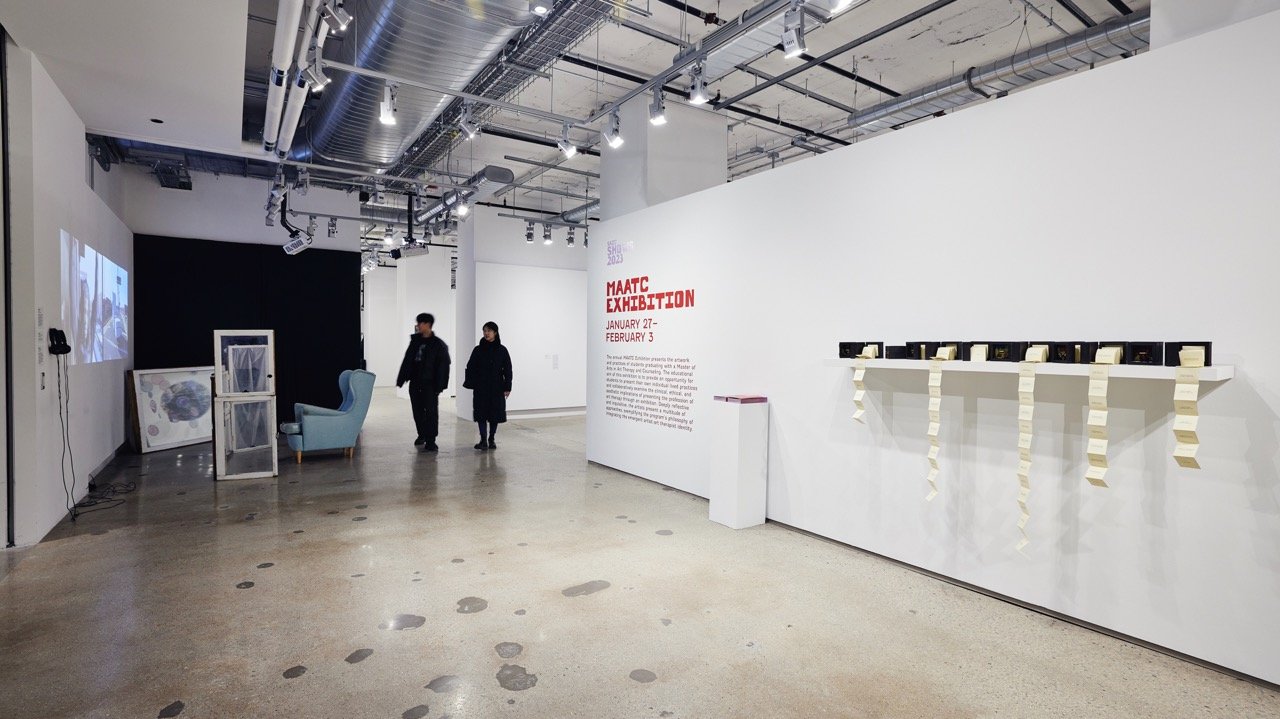
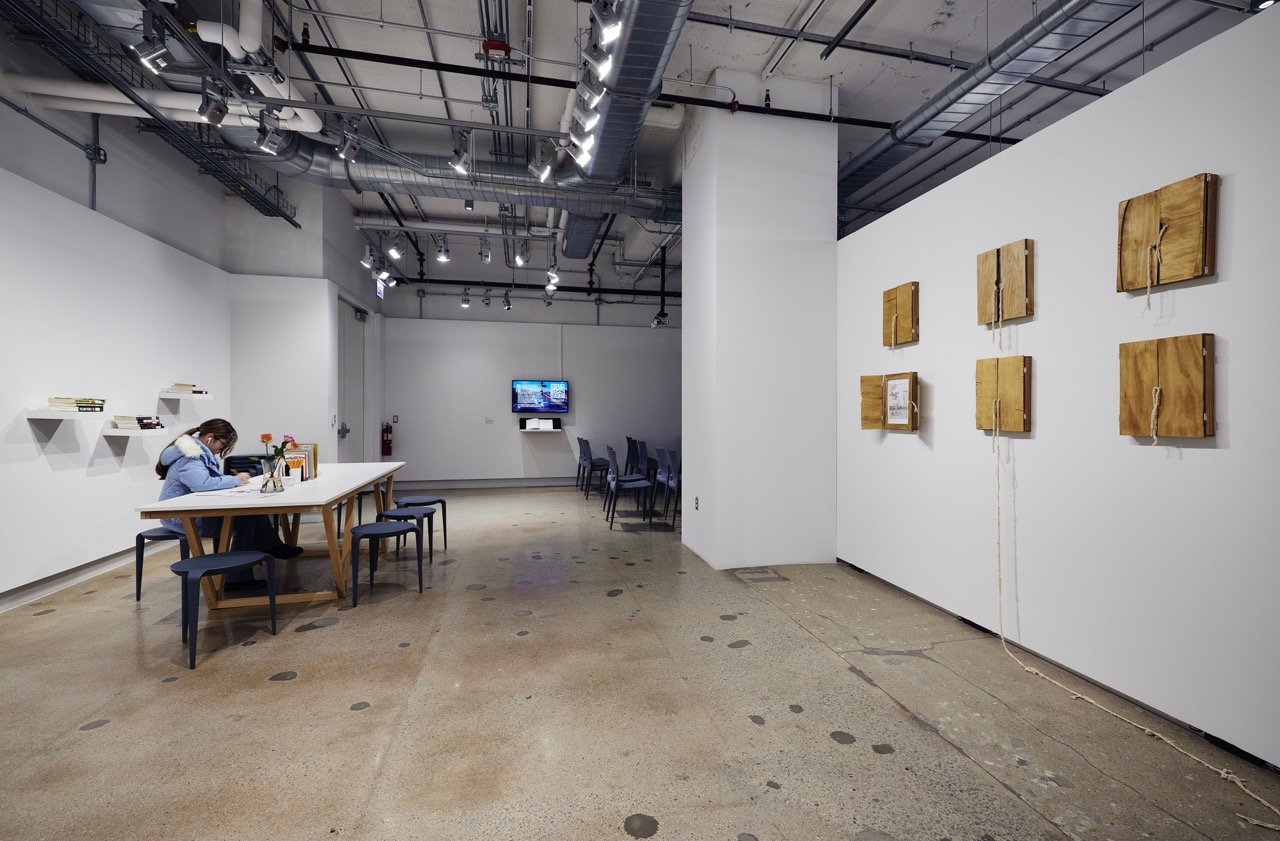
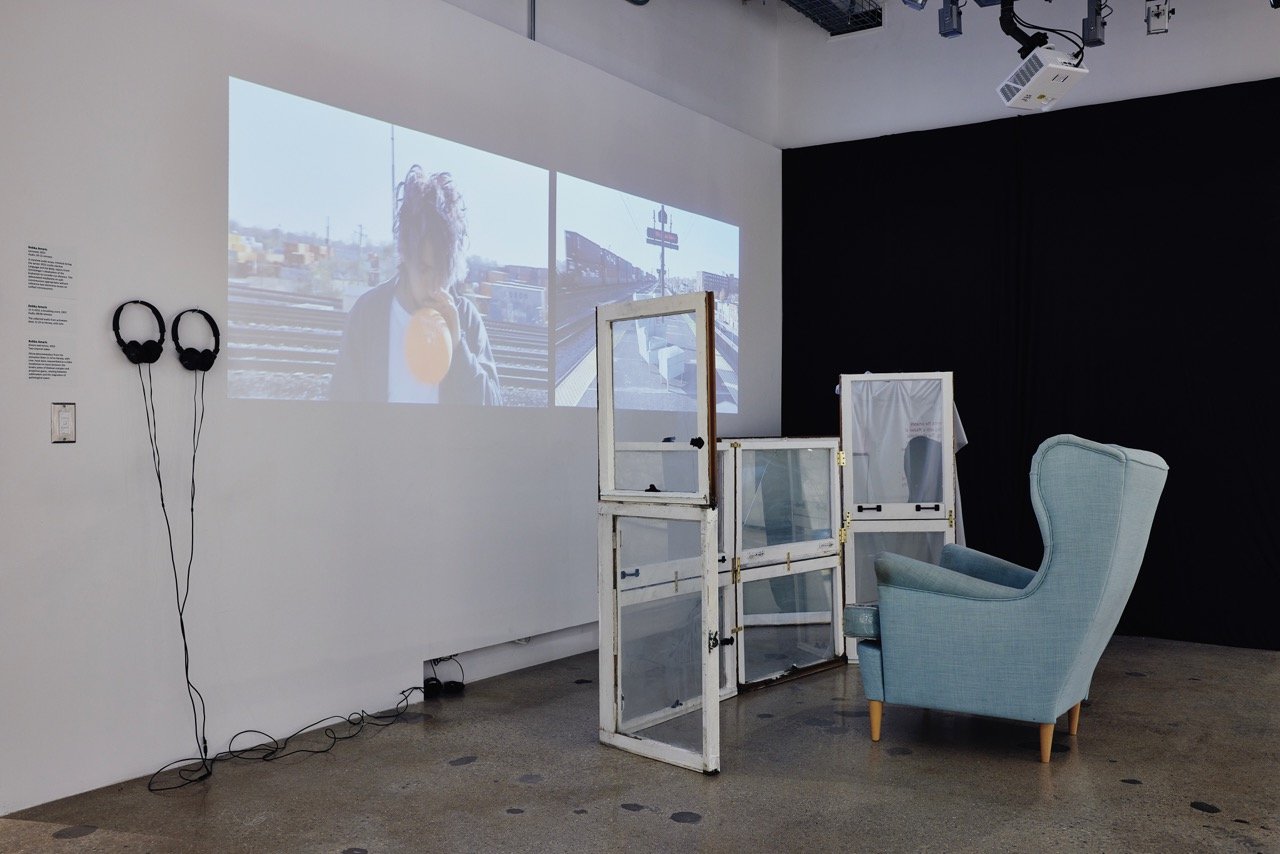

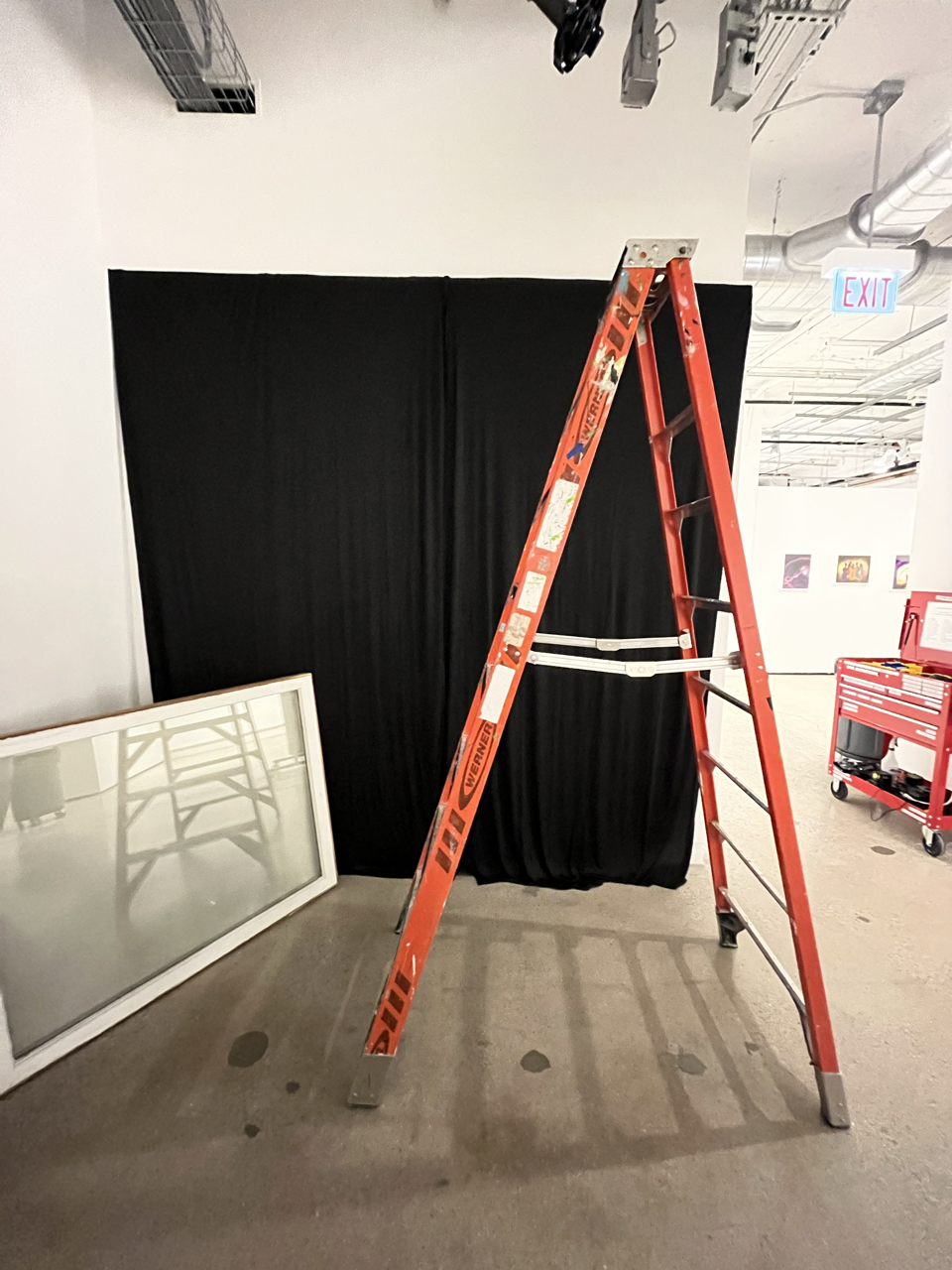



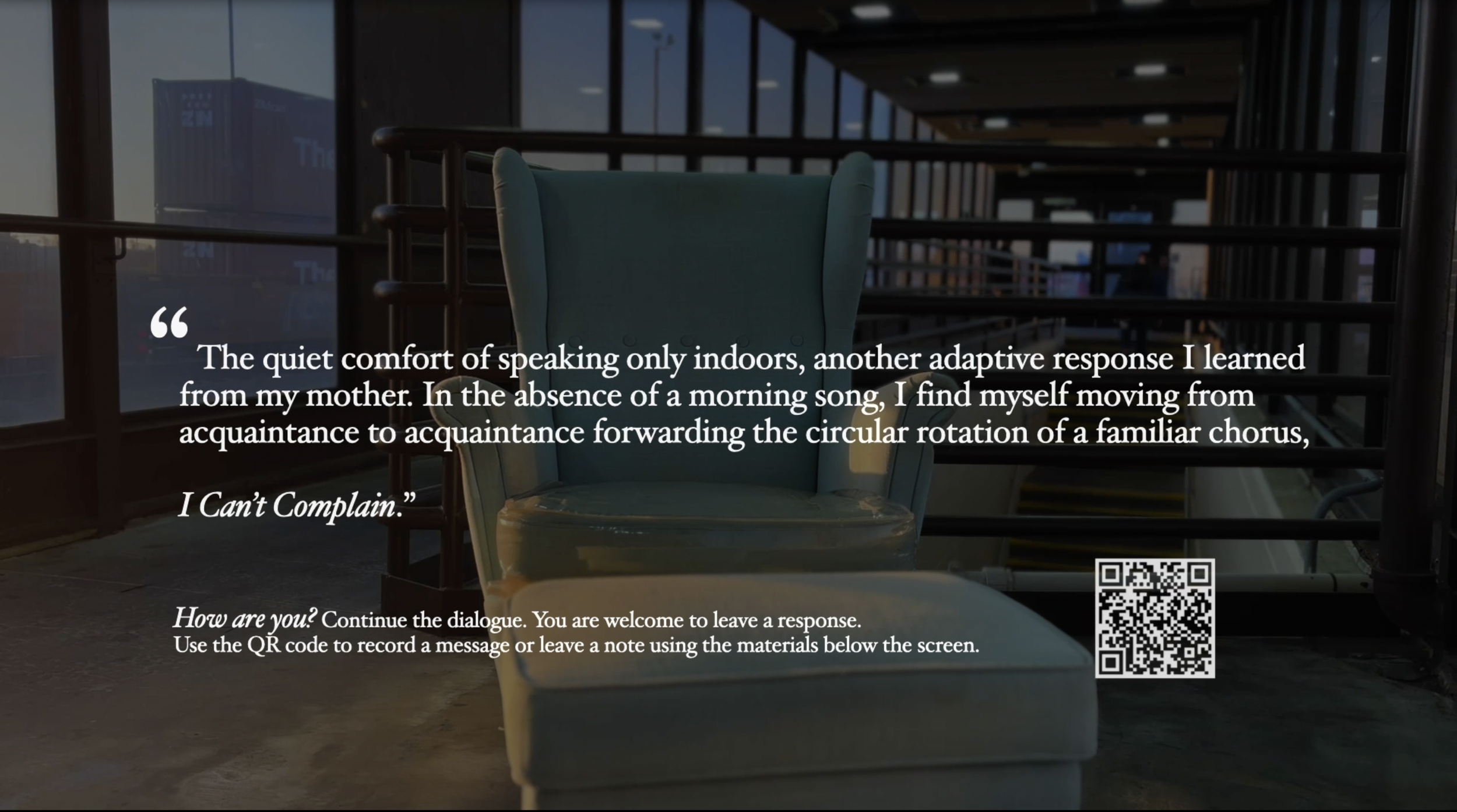

Justice for Families Sound Tapestry
What is a counter-monument? Spatially oriented in the metaphysical, memorials do not have to materialize as the immensity of physical architecture. Counter-monuments challenge the dominant histories of nation-building to reimagine futures beyond the indifference of white negligence.
Presented in the Feminist Ecologies in Community Care, 2023 SXSW Education conference. The Justice for Families (JFF) Sound Tapestry is a documentation record of a community partnership between SAIC Community Practice & Helping Relationships and The Chicago Torture Justice Center.
Oral histories.
The Justice for Families sound tapestry is a dual archive and digital toolkit produced in collaboration with Chicago Torture Justice Center and the Black Lives Matter Chicago Chapter peer support group, Justice for Families (JFF).
The culminating sound tapestry is an acoustic collection of memories and reflections from the surviving family members of Joshua Beal, Archie Lee Chambers, Jr., Rekia Boyd, Ronnie Man Ronald Johnson, and Pierre Loury. Interwoven oral testimonies expertly reminisce on the lives of the deceased to counter the dehumanization of indifferent publics who leave state errors unnamed. This sound-based tapestry honors the impermanence of memory and the contested and dialogical nature of a decentralized public archive to commemorate the living memory of family members killed by on-and-off-duty Chicago police officers. This toolkit honors the remembrance of loved ones by loved ones.
The metaphorical weaving of narratives alludes to the historical use of textiles in the counter-protests of Chilean arpilleras, the embroidered history of the African American quilts, and the forgotten ancestral altars of the Yoruba and Bakongo across West and Central Africa who offered rich cloths to honor the deceased.
Family members forward the memory of Joshua Beal, Archie Lee Chambers, Jr., Rekia Boyd, RonnieMan Ronald Johnson, and Pierre Loury, remembering how they embodied love. Beyond the news and trending hashtags are full narratives with complicated journeys, unrealized ambition, and humorous stories held by loved ones who grapple with the continuation of life in the absence of radiating presence.